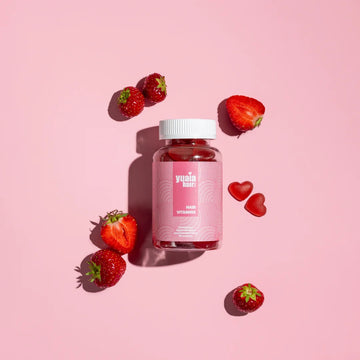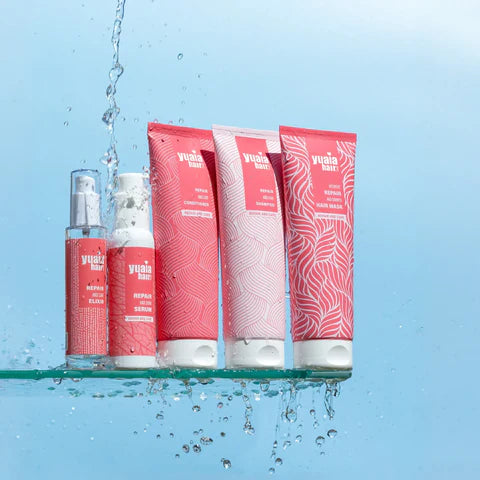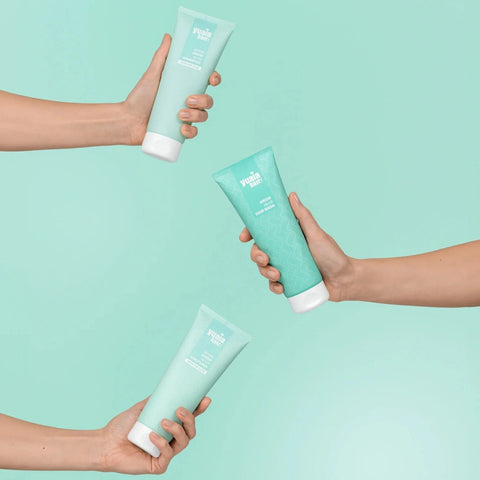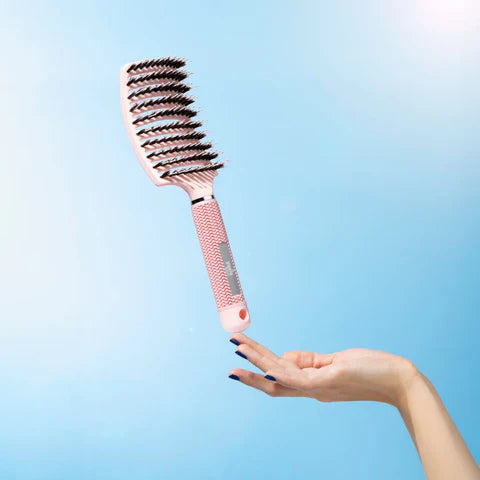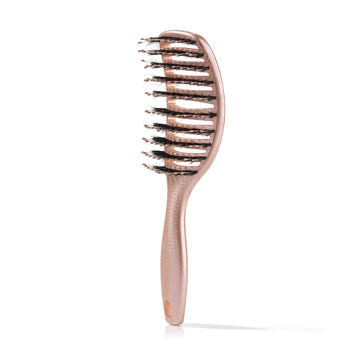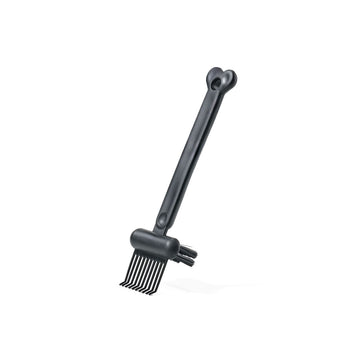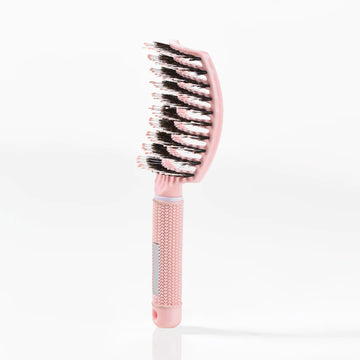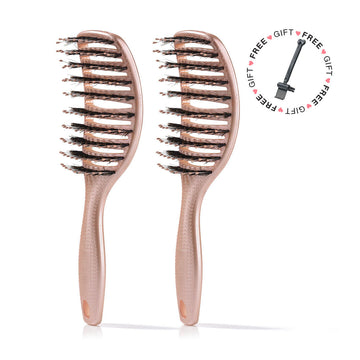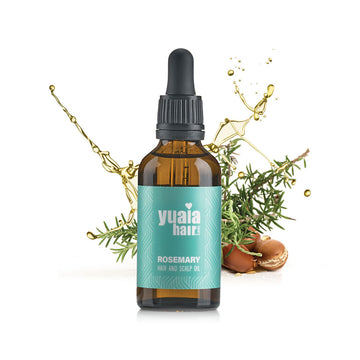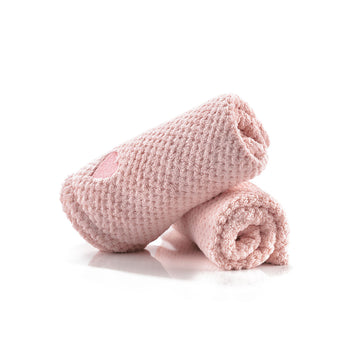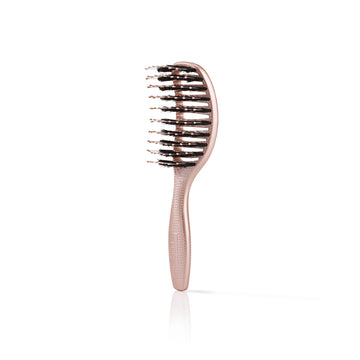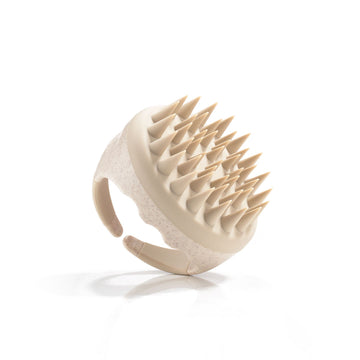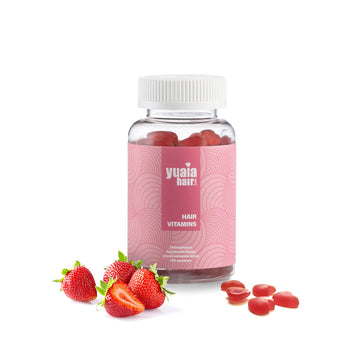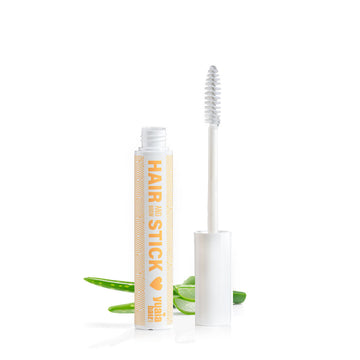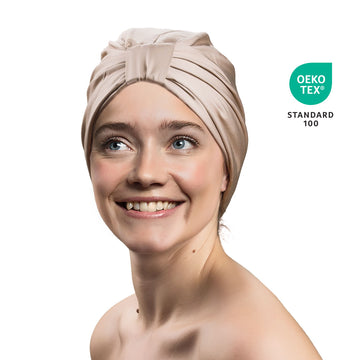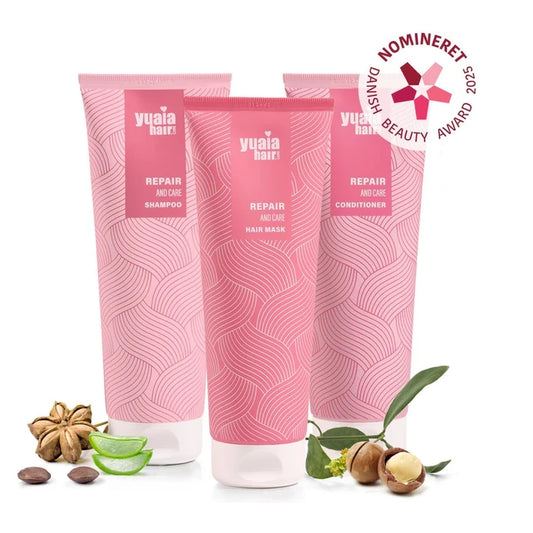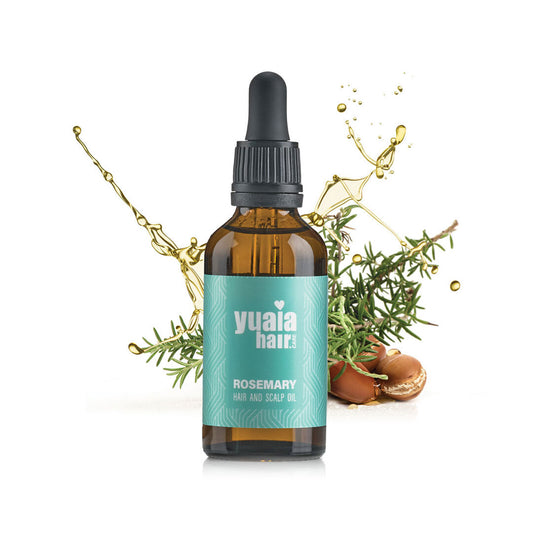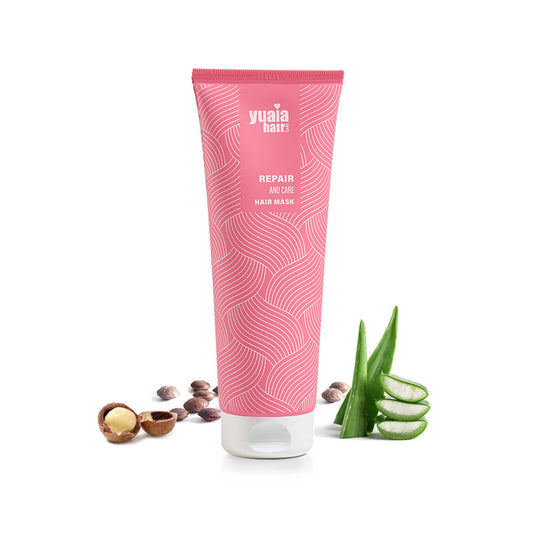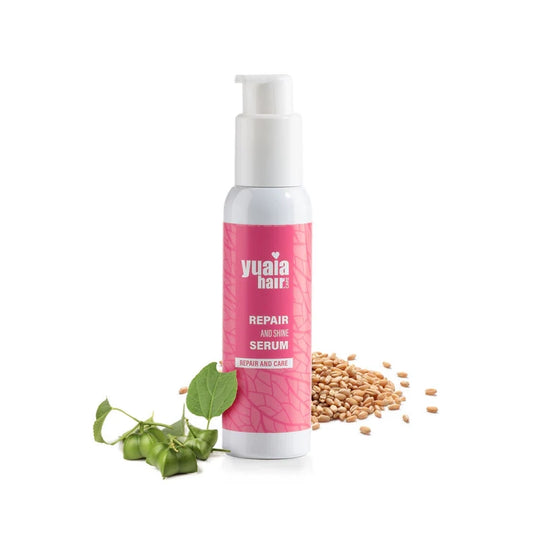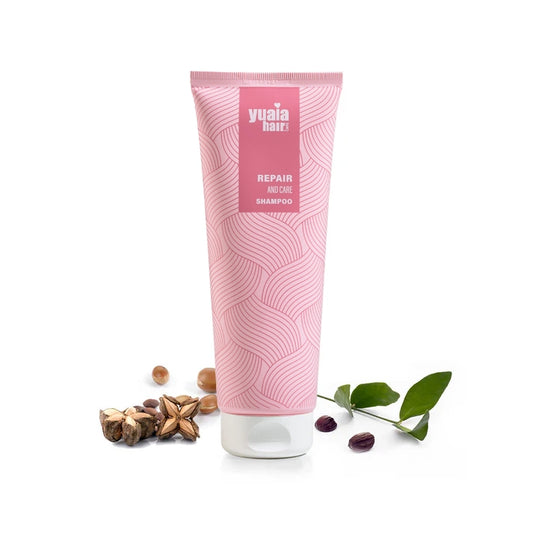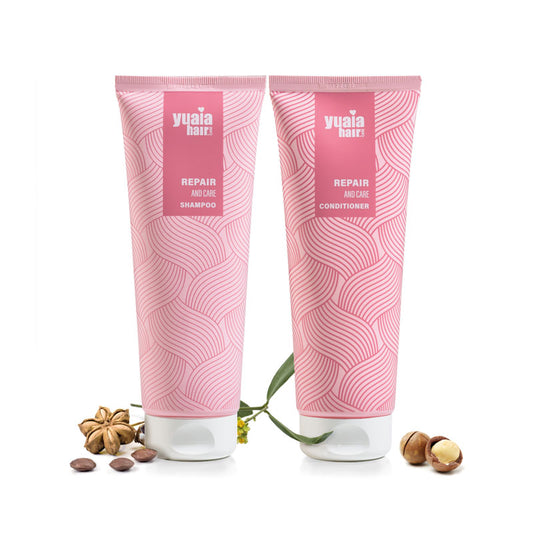
Resistance to moisture absorption
Low porosity hair has a tightly sealed cuticle layer, making it difficult for moisture and hair products to penetrate. Instead of absorbing into the hair shaft, water and products often sit on the surface, leading to dryness and a lack of hydration.
Even after applying moisturizers or conditioners, the hair may still feel dry because the cuticle prevents proper absorption. This resistance can make it challenging to maintain softness and elasticity, requiring techniques such as warm water rinses, lightweight hydrating ingredients, and heat-assisted deep conditioning to help moisture reach the inner layers of the hair shaft.
Product buildup
Low porosity hair is prone to product buildup because its tightly closed cuticles prevent absorption, causing heavy creams, butters, and oils to sit on the surface. Over time, this accumulation can leave the hair feeling greasy, weighed down, or coated with residue. Instead of providing hydration, thick products can create a barrier that further blocks moisture penetration. To prevent this, regular use of a clarifying shampoo helps remove buildup, allowing water and nourishing ingredients to reach the hair shaft.
Opting for lightweight products can also minimize residue while keeping hair hydrated and manageable.
Longer drying time
Low porosity hair takes significantly longer to dry after washing due to its resistance to moisture penetration. Since water has difficulty absorbing into the hair shaft, it remains on the surface for an extended period, making evaporation a slow process. This prolonged drying time can be frustrating, especially for those who prefer air drying. Excess moisture lingering on the scalp may also contribute to product buildup or irritation.
To speed up drying while maintaining hydration, gently blot excess water with a microfiber towel and use a diffuser on a low-heat setting to encourage quicker evaporation without causing damage.
What are the causes of low porosity hair?
Low porosity hair can result from a combination of natural factors and hair care habits that affect the hair’s ability to absorb moisture. Understanding these causes can help prevent further issues and improve hydration.
-
Genetics: The structure of low porosity hair is often inherited, meaning the cuticles naturally lie flat and tightly closed. If family members have difficulty keeping their hair moisturized, it is likely a genetic trait rather than an external issue.
-
Product overuse: Applying excessive amounts of heavy oils, butters, and silicone-based products can create a layer of buildup on the hair shaft. Instead of absorbing moisture, this barrier seals the cuticle even further, making it difficult for water and hydrating ingredients to penetrate.
-
Exposure to certain chemicals: Harsh ingredients in hair care products, such as sulfates, parabens, and drying alcohols, can cause the cuticle to become rigid and resistant to moisture. Continuous use of these chemicals may worsen low porosity hair concerns.
-
Hard water exposure: Minerals found in hard water, such as calcium and magnesium, can deposit onto the hair, forming a layer that blocks moisture absorption. Over time, this buildup can lead to dryness, making hydration even more challenging.
-
Protein overload: While protein treatments strengthen hair, too much protein can make low porosity hair stiff and brittle. Because low porosity hair does not absorb products easily, excessive protein buildup may result in hair feeling dry, coarse, and inflexible.
-
Heat Damage: Frequent use of high-heat styling tools, such as flat irons, curling wands, and blow dryers, can alter the hair's structure. While high porosity hair is more prone to heat-related cuticle damage, overuse of heat can also cause low porosity hair to become overly rigid, further reducing its ability to absorb moisture.
How to care for low porosity hair
Proper care for low porosity hair focuses on improving moisture absorption while preventing buildup. Using lightweight products and using techniques like warm water rinses and heat-assisted conditioning can help hydration penetrate the hair shaft. Regular clarifying also ensures that excess product doesn’t block moisture from reaching the hair.
Cleansing
Effective cleansing of hair is essential for low porosity hair to prevent buildup and allow moisture to penetrate the hair shaft. Since the cuticles are tightly sealed, using the right cleansing methods ensures that hydration reaches the inner layers of the hair.
-
Use of clarifying shampoos: Regularly using clarifying shampoos helps remove excess oils, product residue, and mineral buildup from hard water. Since low porosity hair is prone to buildup, a clarifying shampoo used once or twice a month can help reset the hair and improve moisture absorption.
-
Warm water rinse: Rinsing the hair with warm water before applying shampoo or conditioner can help slightly open the cuticles, allowing moisture to penetrate more effectively. Cold water, while beneficial for sealing in moisture, may prevent products from fully absorbing when used too early in the routine.
-
Avoid heavy products: Thick, oil-based shampoos and conditioners can coat the hair and contribute to buildup rather than providing hydration. Choosing lightweight shampoos ensures proper cleansing without weighing down the hair.
Deep conditioning
-
Regular deep conditioning treatments: Utilize deep conditioners with heat to open the cuticle and allow better moisture penetration. Since low porosity hair naturally resists moisture absorption, heat helps soften the cuticle, making it easier for conditioning ingredients to reach the hair shaft. Wrapping a warm towel around the hair during treatment enhances absorption. Without heat, deep conditioners may sit on the hair’s surface rather than penetrating effectively.
-
Choose products with humectants: Select deep conditioners containing humectants like glycerin, honey, or aloe vera, which attract and retain moisture. Humectants help pull water into the hair shaft, ensuring long-lasting hydration. Since low porosity hair is prone to buildup, lightweight conditioners with humectants work best, preventing heaviness while keeping hair soft and moisturized.
Moisturizing and sealing
-
Use of lightweight leave-in conditioners: Opt for leave-in conditioners that are lightweight to prevent product buildup while ensuring adequate moisture penetration. Since low porosity hair resists absorbing heavier products, choosing formulas enriched with aloe vera, glycerin, or panthenol helps boost hydration without leaving residue. Applying leave-in conditioner to damp hair further enhances absorption, allowing moisture to bind to the hair shaft more effectively.
-
Application of lightweight oils: Seal in moisture with lightweight oils such as argan oil, grapeseed oil, or sweet almond oil, which are easily absorbed without leaving a heavy residue. Unlike thick oils that can sit on the surface, these penetrate the hair shaft to lock in hydration while maintaining softness and shine.
Recommended shampoos for low porosity hair
Choosing the right shampoo is important for maintaining moisture balance and ensuring the health of low porosity hair. Focus on shampoos that effectively cleanse without causing buildup and contain ingredients that aid in moisture absorption.

Clarifying shampoos
Low porosity hair is prone to product buildup due to its tightly closed cuticles. Using a clarifying shampoo into your routine helps remove residue and allows for better moisture absorption. Key ingredients to look for include:
-
Apple cider vinegar – Helps break down buildup and balances the scalp's pH.
-
Salicylic acid – Gently exfoliates the scalp, removing impurities.
Use clarifying shampoos sparingly, about once a month, to avoid over-stripping natural oils.
Moisturizing shampoos
Hydration is essential for low porosity hair, but it's important to choose shampoos with lightweight, penetrating ingredients that won't cause buildup. Look for components such as:
-
Aloe vera – Known for its soothing and moisturizing properties.
-
Glycerin – A humectant that attracts and retains moisture.
-
Honey – Natural humectant that helps maintain hydration.
These ingredients help to hydrate the hair without weighing it down.
A fantastic choice is our Repair and Care Shampoo, enriched with aloe vera and glycerin, made to provide intense hydration and nourishment for high porosity hair. This unique formula helps restore moisture balance, leaving hair stronger and more manageable. Together, these ingredients fight dryness and contribute to enhanced hair health.
Best oils for low porosity hair
Oils play an important role in managing low porosity hair by sealing in moisture, providing nourishment, and enhancing shine. Choosing the right oils can make a significant difference in hair health.
Lightweight penetrating oils
For low porosity hair, it's essential to use lightweight oils that can penetrate the tightly bound cuticles without causing buildup. These oils help to nourish the hair from within and maintain moisture balance.
-
Jojoba oil – Mimics the scalp's natural oils, easily absorbed without buildup.
-
Argan oil – Rich in essential fatty acids, penetrates hair to provide deep hydration.
-
Sweet almond oil – Lightweight and nourishing, helps seal in moisture.
Ceramide-rich oils
Ceramides are lipid molecules that help reinforce the hair's natural barrier, improving moisture retention and protecting against damage. Oils high in ceramides are beneficial for smoothing the hair cuticle and enhancing elasticity.
-
Sunflower oil – Lightweight yet rich in ceramides, helps improve hair elasticity and reduces breakage.
-
Hemp Seed Oil – Strengthens hair, enhances shine, and helps maintain moisture balance.
 2-4 day UK delivery
2-4 day UK delivery
 25.000+ satisfied customers
25.000+ satisfied customers
 Satisfaction Guarantee
Satisfaction Guarantee

